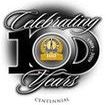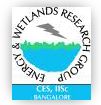 |
Land surface temperature with land cover dynamics: multi-resolution, spatio-temporal data analysis of Greater Bangalore |
 |
Discussion The analysis showed that there has been a 466% increase in built up area from 1973 to 2007 as evident from temporal analysis leading to a sharp decline of 61% area in water bodies. LU changes were more prominent in the city during the last 2 decades consequent to rapid urbanisation accompanied with urban sprawl with IT (Information Technology) and BT (Biotechnology) boom and consequent migration of people from different regions. Identification of the changed patches or specific region that underwent changes (from one LU to other) is not easily achievable in a highly dynamic and large urbanising environment considering the varying range of spatial resolutions (23.5 to 250 m) across time (1973 to 2007). This requires the development and maintenance of database for each LU across a large time-scale (Zhang and Zhang, 2007). A newly constructed flyover or road (for example see a new road in Figure 3 (e) running from south to north highlighted in a rectangular box in the second half of the image), was detected as a broken line in figure 3 (f) due to shadow or getting merged with other classes (mixed pixels), etc. This was obtained by differencing TC transformed 92 and 2000 brightness values and the changed patches were identified using Region Growing Method (RGM) along with thresholding. The exact delineation of the boundary for every recognised change patch also depends on the minimum mapping unit (MMU) and its proper selection (Zhang and Zhang, 2007). Large MMU changes result in significant differences in the accuracy estimates of LC classification. They make change detection more accurate but often miss real and small LU changes. A small MMU present detailed LU changes but also increase the uncertainty of the RS derived change product. MMU for various pixel sizes are listed in table 6. The minimum built up size in residential areas is ~ 0.011 ha to 0.037 ha and often extend up to 1 ha (in case of multi-storied buildings) while industrial buildings can spread from 50 to 150 ha approximately. One way to delineate such features is to perform interactive on-screen editing along with visual interpretation in a synergistic way. MODIS and Landsat MSS present significant challenge due to mixed pixel problems. Landsat TM/ETM+ and IRS LISS-III are adequate for detecting pixel patch changes, yet most of the objects fall on boundaries of two adjacent pixels and they are smaller than the MMU size (form mixed pixels). Hence, these data tend to over estimate the LU classes. The area derived from RS data is closer to the area on the ground when patch size increases. However, area measurements from high spatial resolution were more accurate. The correlation (r) between NDVI and temperature of 1992 (based on TM data) was 0.88. Similarly for 2000, r was 0.72 (MODIS 2000) and 0.65 (MODIS 2007) respectively. Analysis of LST with NDVI suggests that the extent of LC with vegetation plays a significant role in the regional LST. Although many factors can contribute to the variations of LST, the spatial arrangement and aerial extent of various LU types is a fundamental one. Within the city, if we consider the LU nature, then we see that temperature falls from densely builtup area to medium builtup area and again from medium builtup to vegetative land. The temperature close to vegetation and wetlands were lower by 4 and 5-7 ºC respectively (see table 2). This highlights that LU characteristics play a significant role in maintaining the ambient temperature and also in the regional heat island phenomenon. Vegetation and water bodies are negatively correlated with temperature suggesting that these LU aid as heat sinks and hence maintains salubrious regional climate. Accuracy of the unmixing decision based approach considering information from sub-pixel class proportions and classified map obtained using training data was 85.46%. This approach is apt for fusing the information obtained from multi-sensors (such as MODIS and IRS). MODIS based sub-pixel information obtained from one of the unmixing techniques can be fused with IRS LISS-III MSS classified information. The endmembers for MODIS data unmixing can be extracted from the image itself (Kumar, U., et al., 2008), while IRS LISS-III MSS classification is done with the training data. This technique would be helpful in optimising the benefits of higher spectral and spatial resolutions of multi-sensors. ertain areas in the city with sparsely located building having parks and lakes in the surroundings have lower air temperature compared to completely urbanised regions. UHI is evident with the enhanced surface temperatures in urbanised landscapes compared to their surroundings (non-urbanised). Temperature profile with respect to human population density is depicted in figure 8, suggesting that dense urban areas have higher temperatures. When the population of a region exceeds its carrying capacity, it exerts pressure on the local natural resources (land, water, etc.). Correlations among LST and NDVI are the result of unique signatures of the biophysical parameters due to interactions between thermal and vegetation dynamics in each LU. |